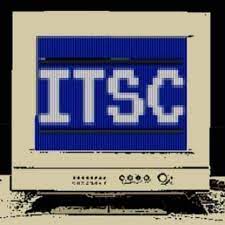
Becoming debt-free is a milestone, but protecting your credit afterward takes more than good intentions. Once payments stop, lenders and credit systems watch how you handle new freedom, and score improvements depend on reporting cycles and responsible behavior.
Smart technology now helps, with connected tools that flag issues, reinforce habits, and prevent mistakes. Whether rebuilding or starting fresh, moving from manual tracking to automated insight offers better control and lasting credit health.
Debt Payoff Begins the Shift to Smarter Credit
Eliminating debt creates a turning point, but it is not the final word on your credit journey. Once balances hit zero, most credit scores begin to reflect the change within one or two reporting cycles, usually about 30 to 45 days. This leads many consumers to ask how long until credit improves in a meaningful way.
The answer depends on more than timing. Scores respond to patterns, not just balance updates. Low utilization, consistent payments, and a healthy credit mix all contribute to that upward momentum. This is where connected tools begin to take over. As traditional debt falls away, IoT-driven apps and smart alerts can help track your credit behavior, catch irregularities, and prevent new problems before they start. Staying debt-free is easier when automated systems reinforce the right decisions in real time.
Smart Devices Help You Stay Financially Alert
IoT-enabled financial apps and devices are becoming smarter at recognizing shifts in your money patterns. Whether it is a smartwatch alerting you to a missed due date or a budgeting app using IoT inputs from linked cards and smart appliances, these systems help avoid slips that could harm your credit.
Many of today’s financial monitoring tools include automation that flags abnormal activity. For example, if your usual bill-paying schedule changes or a new account is added to your report, connected systems can notify you immediately. Some home assistants even integrate with credit dashboards to provide voice-activated updates on utilization or recent score movements.
By using IoT, you shift from reactive tracking to proactive maintenance. You do not have to log in daily or rely on memory to keep tabs on your credit habits. Instead, automated systems help ensure your financial hygiene stays consistent, protecting your credit from accidental errors.
IoT Defends Against Identity Theft and Credit Breaches
A large portion of credit damage stems not from overspending but from breaches that go undetected. Devices connected through IoT can identify suspicious behavior faster than most manual tools. Smart locks, biometric scans, and facial recognition systems now interact with banking apps and digital wallets.
If your identity is compromised, these tools can cut access across devices instantly. Wearable tech also plays a role, some credit protection services now use smartwatch alerts to verify charges or freeze accounts remotely.
Many IoT credit protection systems track geolocation and usage trends to create a behavioral fingerprint. When a login or transaction falls outside the norm, the system triggers secondary verification or sends an instant lockout alert. These tools reduce the time between a breach and detection, often minimizing the damage before it affects your credit file.
Your Credit Utilization Can Be Tracked In Real Time
Traditional financial tools only provide insights after the fact. IoT-connected apps now monitor utilization in near real time, making it easier to avoid thresholds that could drag your score down.
For example, if your spending reaches 28 percent of your available credit (just below the recommended 30 percent cap), some systems can issue an instant notification. Others automatically shift payment dates or suggest micro-payments throughout the month to keep balances lower. Smart budgeting platforms integrated with IoT sensors can also forecast future spending patterns, warning you before your credit profile is affected.
This level of minute-by-minute tracking offers more than awareness. It gives users the chance to course-correct before behavior becomes damage. As credit scores rely heavily on utilization, especially for those rebuilding or maintaining a high rating, this toolset is a powerful protective layer.
IoT Enhances Loan Management and Payment Scheduling
Even a single late payment can undo months of credit improvement. IoT-based reminders and auto-schedulers reduce that risk.
Automated Reminders Across Devices
Smart assistants, smartphones, and even voice-enabled TVs can push synchronized alerts before payment dates arrive. These layered reminders help reinforce consistency without requiring manual calendar setup. The more frequently you’re prompted, the less likely a missed due date becomes. Over time, this creates a routine that strengthens long-term financial discipline.
Adaptive Scheduling Based on Behavior
IoT apps analyze behavioral patterns like sleep cycles, location, and cash flow before recommending payment dates. If your income varies or spending spikes midweek, the system adjusts accordingly. This makes the payment process feel less rigid and more intuitive. The result is a payment plan that feels personalized instead of one-size-fits-all.
Reducing Missed Payments With Smart Alerts
Some platforms monitor your location or activity and send alerts when you’re likely to forget. For example, if you’re on vacation or commuting during a billing window, the alert will trigger early. These context-based nudges can preserve a flawless payment record. By anticipating distractions, the system helps borrowers stay on track even in unpredictable situations.
Building A Smarter Financial Future
Reaching zero debt is an accomplishment, but protecting that status takes diligence. With credit scores acting as a foundation for most financial opportunities, any slip can set you back. That is where IoT becomes not just a convenience but a safeguard.
By layering automation, early detection, and adaptive feedback into your credit maintenance routine, IoT devices make it easier to stay in control. The shift from manual monitoring to real-time intelligence means fewer surprises and faster reactions. In a world where one misstep can change your credit picture, a smart, connected system becomes a powerful ally for staying ahead.
The post From Debt-Free to Data-Driven: Using IoT to Protect Your Credit first appeared on TechToday.
This post originally appeared on TechToday.
